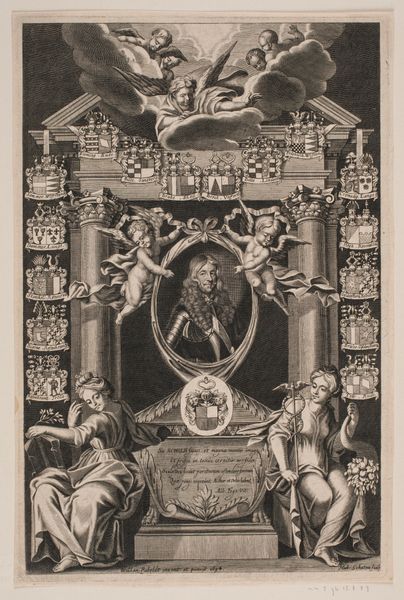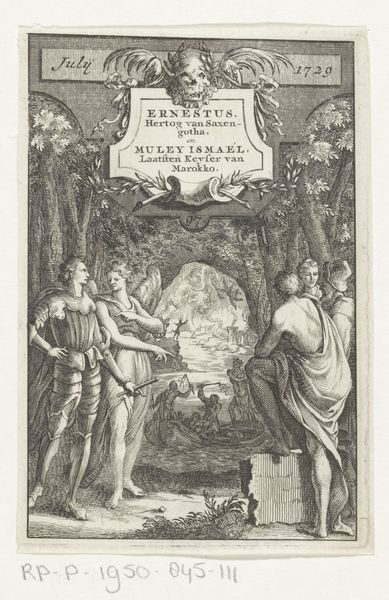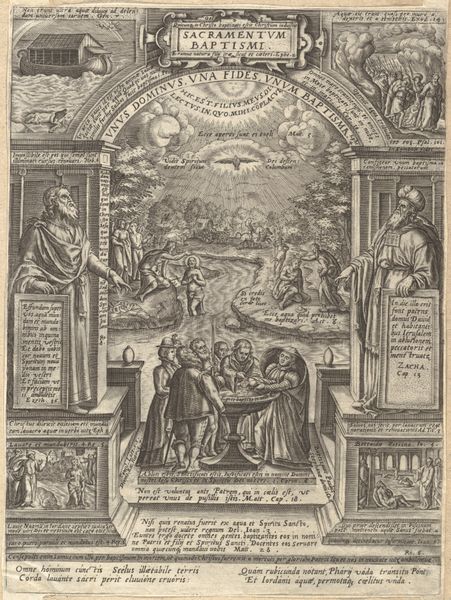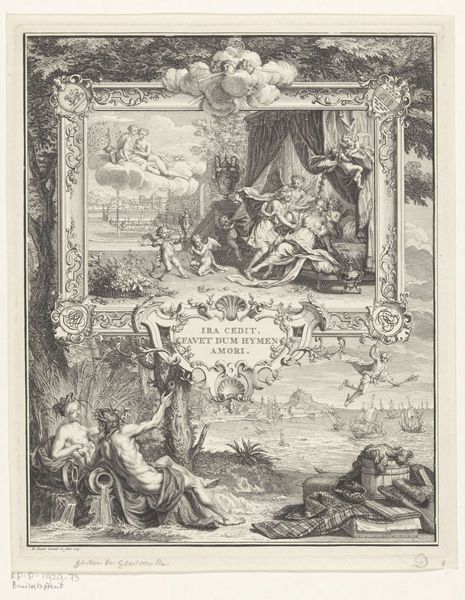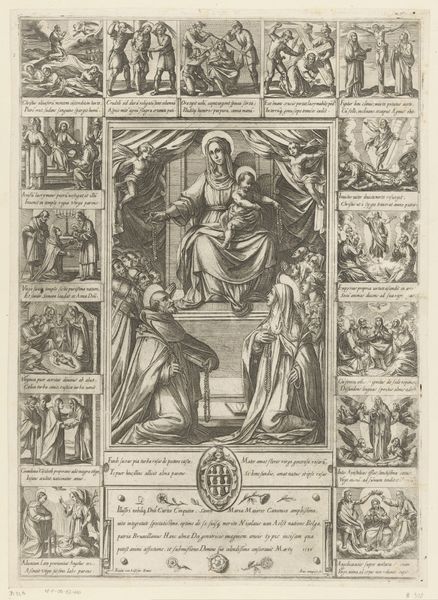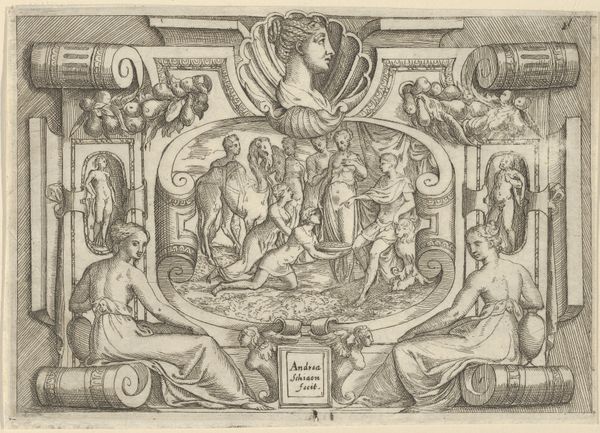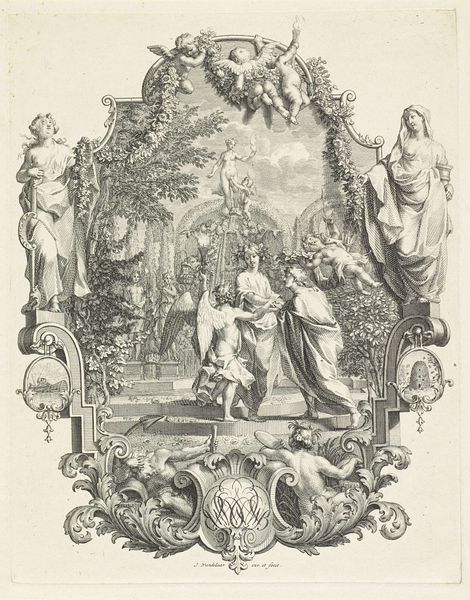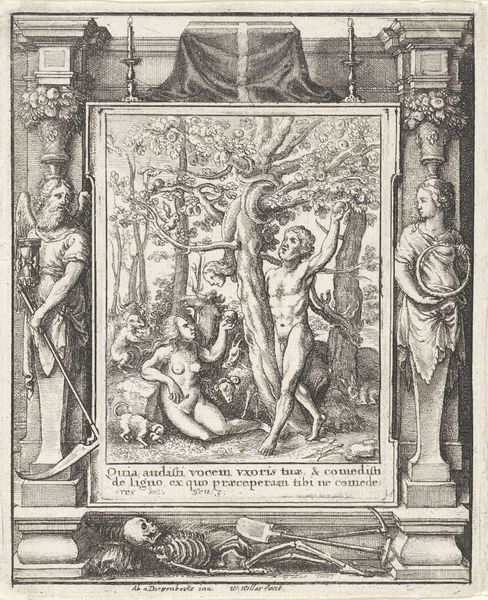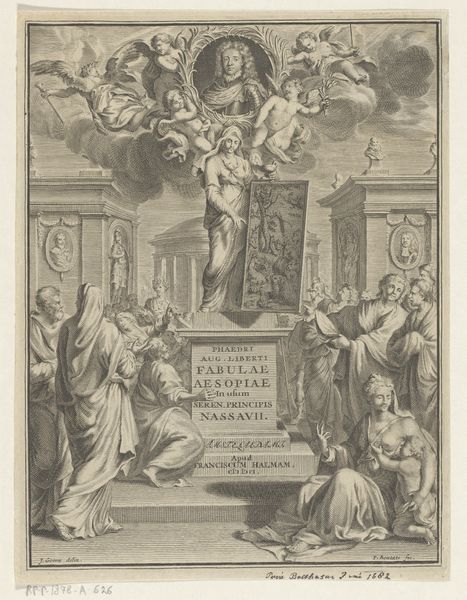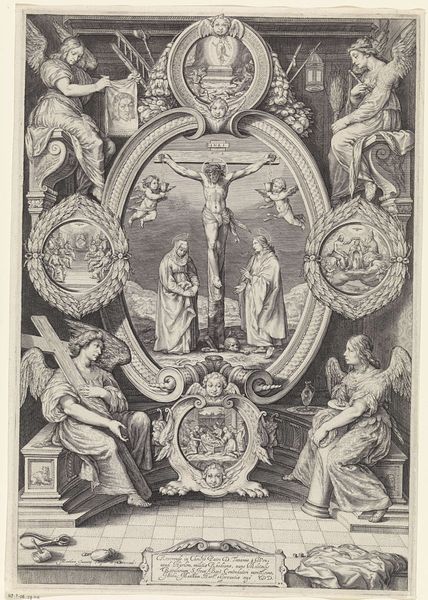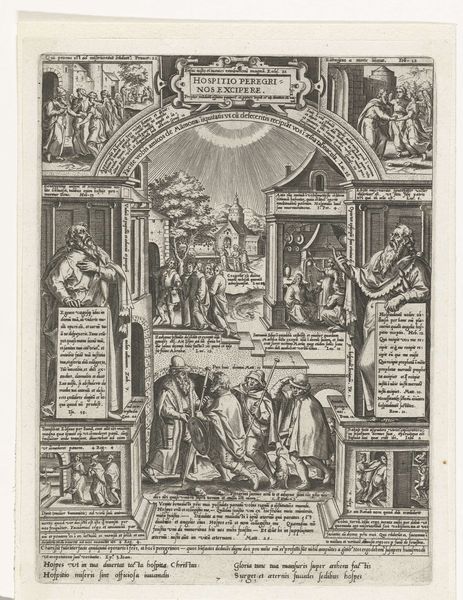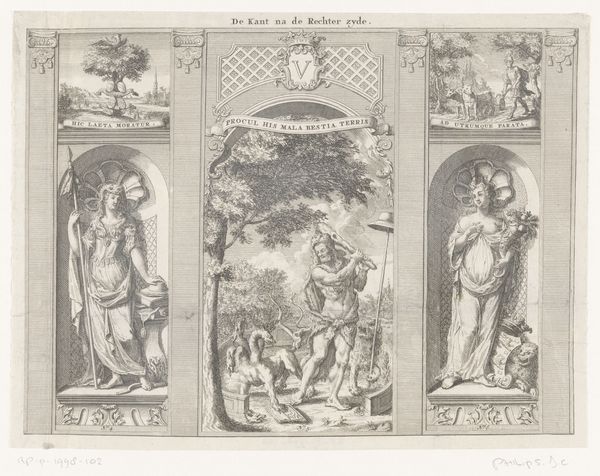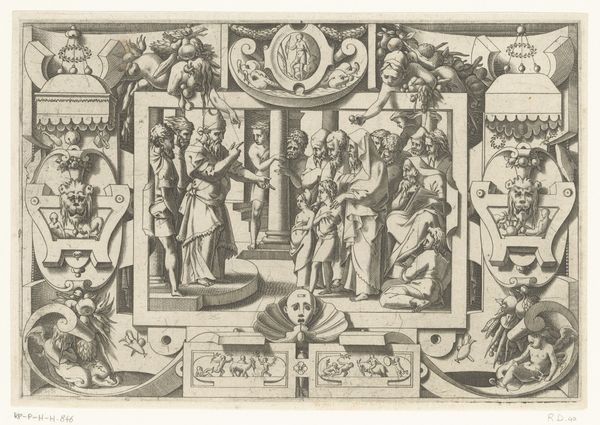
Christus als de Goede herder geflankeerd door Pax en Silentium 1600
0:00
0:00
johannsadeleri
Rijksmuseum
engraving
#
allegory
#
baroque
#
symbol
#
old engraving style
#
history-painting
#
engraving
Dimensions: width 205 mm, height 166 mm
Copyright: Rijks Museum: Open Domain
Curator: Oh, look, this engraving just vibrates with a quiet intensity. I feel immediately transported, somehow grounded and lifted at the same time, like breathing the forest floor and seeing heaven. Editor: That's a lovely sentiment. This piece, created around 1600, is called "Christus als de Goede herder geflankeerd door Pax en Silentium"—Christ as the Good Shepherd Flanked by Peace and Silence—by Johann Sadeler I. It's an engraving, so entirely built from these intricate lines. It resides here at the Rijksmuseum. Curator: Engraving really sings to me. There is a devotion involved—the kind that makes the ephemeral feel solid, permanent, like the soul carved into copper. How about that tender Christ-figure in the centre niche. He is no longer leading his followers, he seems like he is hugging an adorable baby sheep instead. He emanates pure softness and compassion. Editor: Absolutely, and notice the careful composition—the flanking figures representing Obedience and Humility frame this central image. These figures exist in a state-sponsored and controlled pastoral setting that highlights Christian virtue as social order. The inscription at the bottom is dedicated to Pope Clement VIII. It underscores how religious imagery served not just devotional purposes, but also cemented power. Curator: Ah, yes, always power lurking somewhere. Yet, those overgrown details offer more that strict institutional order: Nature reclaims the monument from obedience and humility. What do you think about that skull, a symbolic death, under the figure of Obedience? Like a beautiful rotting fruit, Obedience eventually withers on its conceptual vine. I think those engravers have an eye on institutional change. Editor: That's a thoughtful reading! I appreciate how you are tracing the potential ruptures within a system seemingly set in stone. It encourages a more layered reception. Curator: It always should be, especially when the artist makes peace possible between obedience and the beautiful end of life. And peace... that's something truly lasting.
Comments
No comments
Be the first to comment and join the conversation on the ultimate creative platform.

